With their nodding white blooms and fresh green foliage, snowdrops (Galanthus) herald the end of winter. Planted en masse, they light up the late winter and spring garden, and look lovely with other late winter blooms such as pink and white Cyclamen coum and yellow aconites. Up close, they have a subtle honey scent.
Jump to how to divide your snowdrops
There are several species and many hundreds of cultivars of snowdrops. You can tell them apart by the green (or sometimes yellow) markings on the inner petals. Occasionally the outer petals are also tipped with colour. There are both single and double varieties.
Yellow snowdrops? Yes, they do exist - and come at a high price
Many types are rare or scarce, and demand high prices per bulb – in 2022, a single snowdrop bulb sold for £1,850. However you can create a wonderful display with the more widely available, affordable types of Galanthus that are widely available at nurseries and garden centres.
The best online bulb suppliers
Snowdrops are perennial, so will flower year after year. Once established, they are low maintenance and mostly trouble free. However, they need the right growing conditions to thrive.
Jump to
- How to propagate snowdrops
- When to plant snowdrops
- When do snowdrops flower?
- Where to plant snowdrops
- How to plant snowdrops
- How to care for snowdrops
- Snowdrop problems
How to grow snowdrops
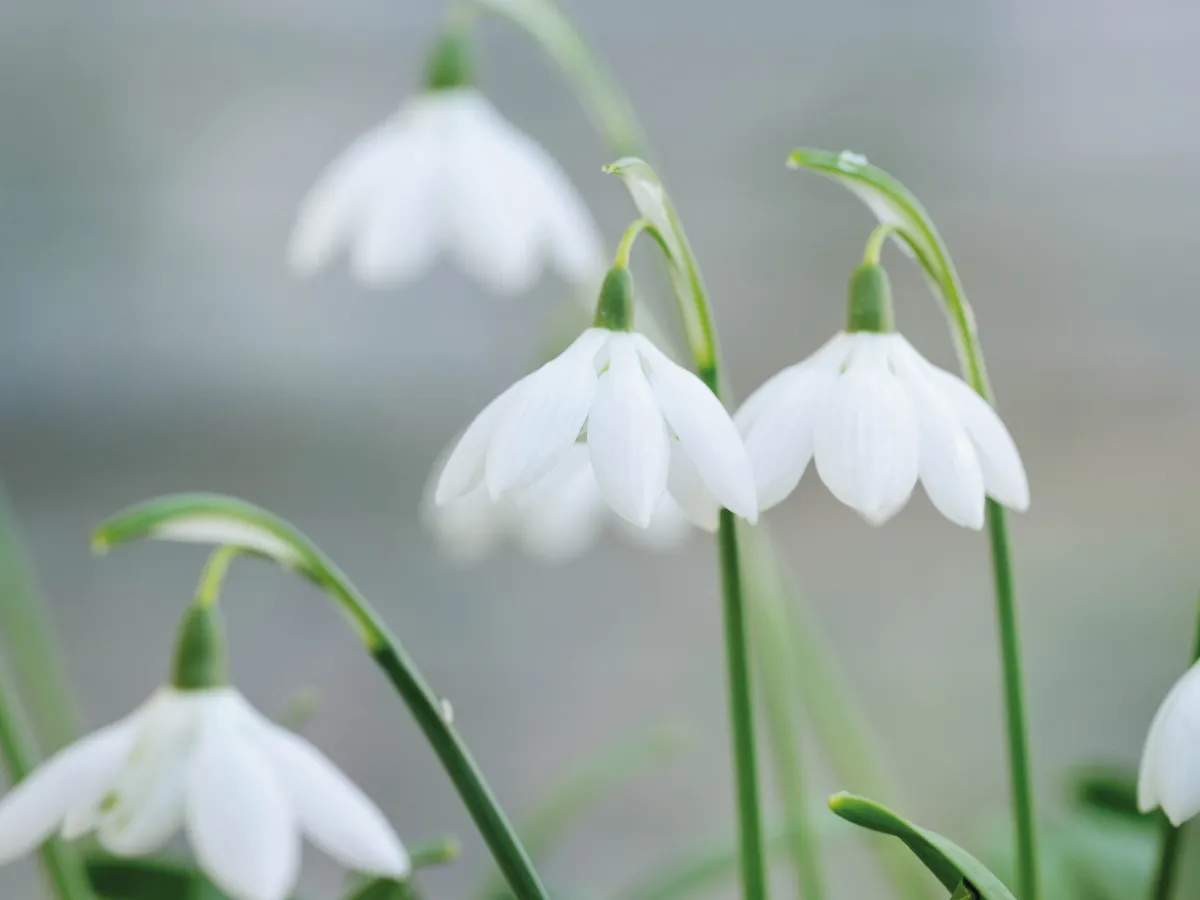
When to plant snowdrops
Spring: Snowdrops are best planted ‘in the green' in late spring. This means that the plants have been dug up while still in growth, just as the leaves are about to die back, to be replanted straightaway. Snowdrops in the green are usually sold online or by mail order, and should be planted as soon as they arrive so that they don’t dry out.
Snowdrops in the green: how to plant and where to buy
Autumn: Dry snowdrop bulbs can also be planted in autumn, at the same time as other spring bulbs such as narcissi (daffodils).
Late winter: You can also plant container-grown snowdrops (often sold in flower at the garden centre) in late winter.
More on growing snowdrops:
Snowdrops: The best places to see snowdrops in 2025
When do snowdrops flower?
Most snowdrops flower in late winter and early spring. However some types, such as Galanthus reginae-olgae subsp. reginae-olgae, flower in autumn.
Where to plant snowdrops
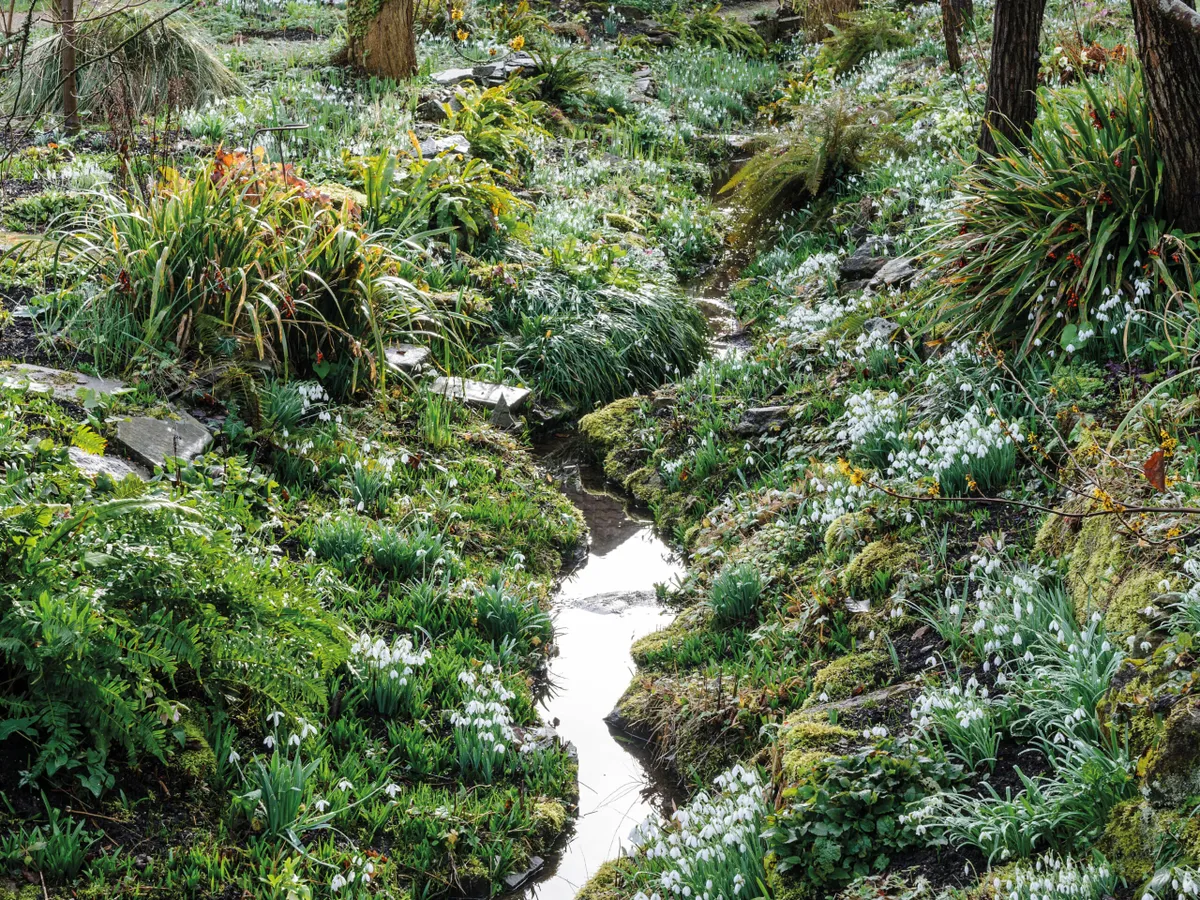
Plant snowdrops in moist but well-drained soil that does not dry out in summer – a position in part shade is ideal, as they will receive some sunlight and rain in spring but have cover in the summer. A spot under the canopy of a deciduous tree is perfect.
Snowdrops look fantastic in large drifts and naturalise well. To enjoy their blooms, intricate markings and scent up close, you could try planting them on a bank, or in pots on a plant stand.
How to plant snowdrops
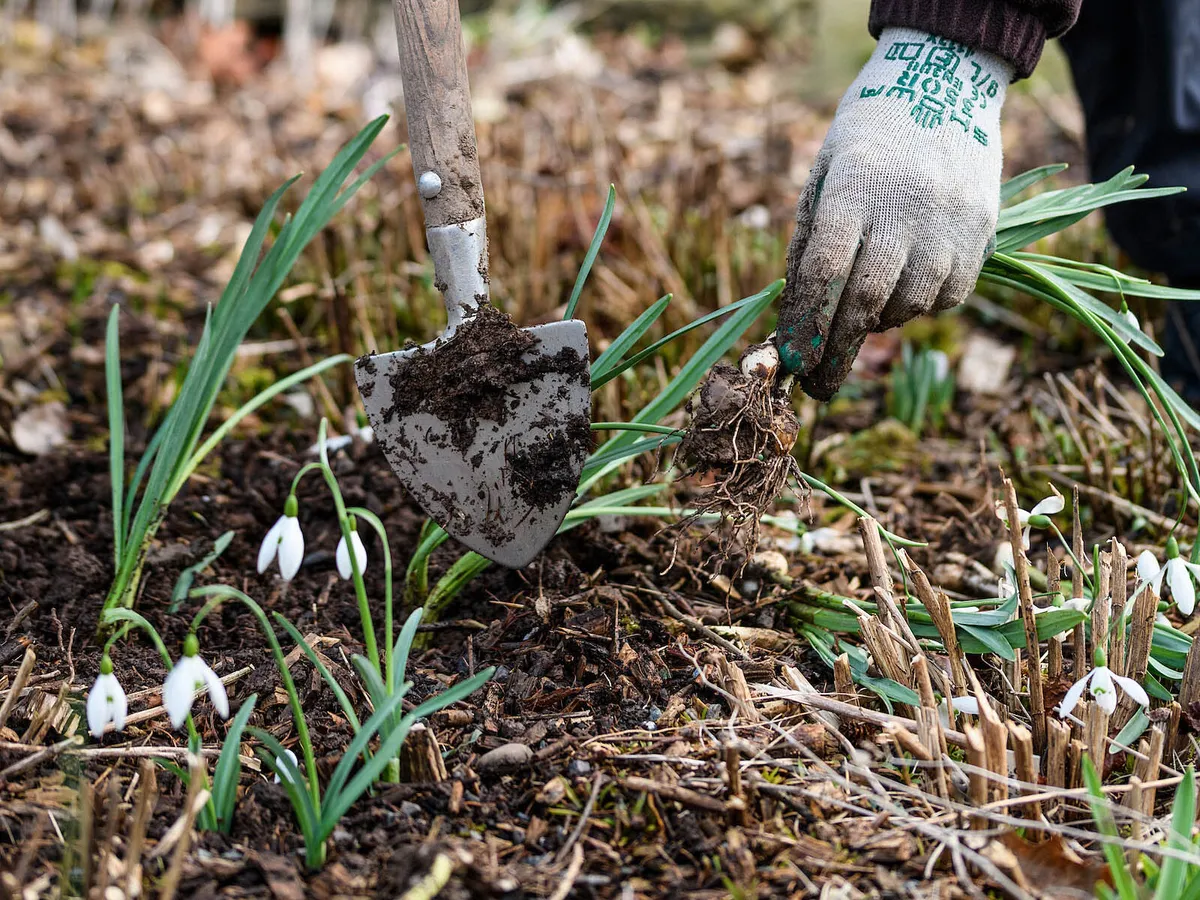
Snowdrops are available as dry bulbs, container grown plants in pots, or plants 'in the green'.
Plant dry bulbs in autumn, 10cm deep, with the pointed end of the bulb facing up. Use a trowel, or a specialist bulb planter.
Plant snowdrops in the green to the same depth as they were growing before – you should be able to see where the stem turns from green to white. Space plants at least 10cm (4in) apart.
Snowdrops in the green: how to plant and where to buy
How to propagate snowdrops
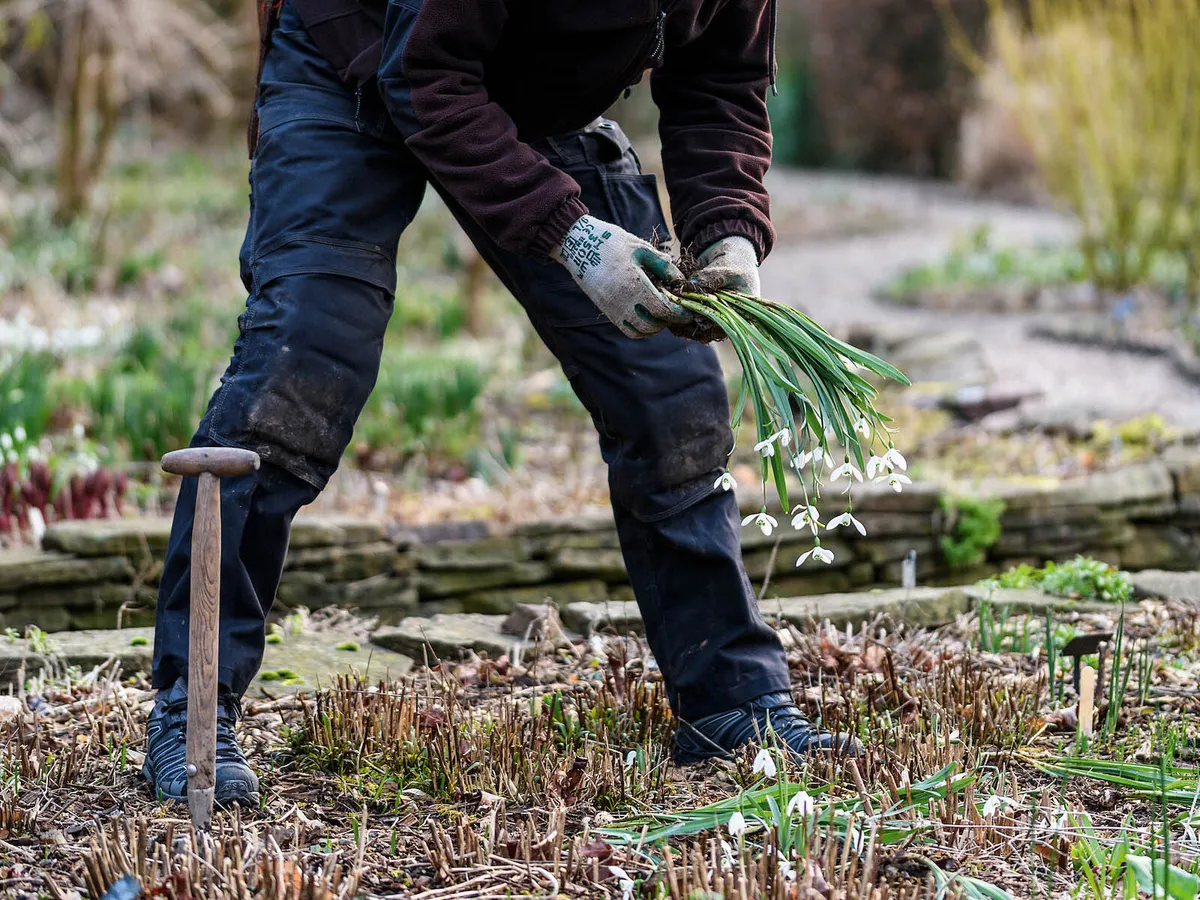
To increase your number of plants for an impressive display, lift clumps of snowdrops just after flowering, and before the foliage turns yellow. Divide the clumps into smaller groups and replant them straightaway at the same depth, further apart.
For snowdrop types that set seed, you can harvest the fresh green seed as it ripens and sow into pots of compost. They may not come true from seed.
You can also propagate snowdrops by chipping and scaling the bulbs, but these are specialist techniques. If you fancy having a go, read our our guide to propagating snowdrops.
How to care for snowdrops
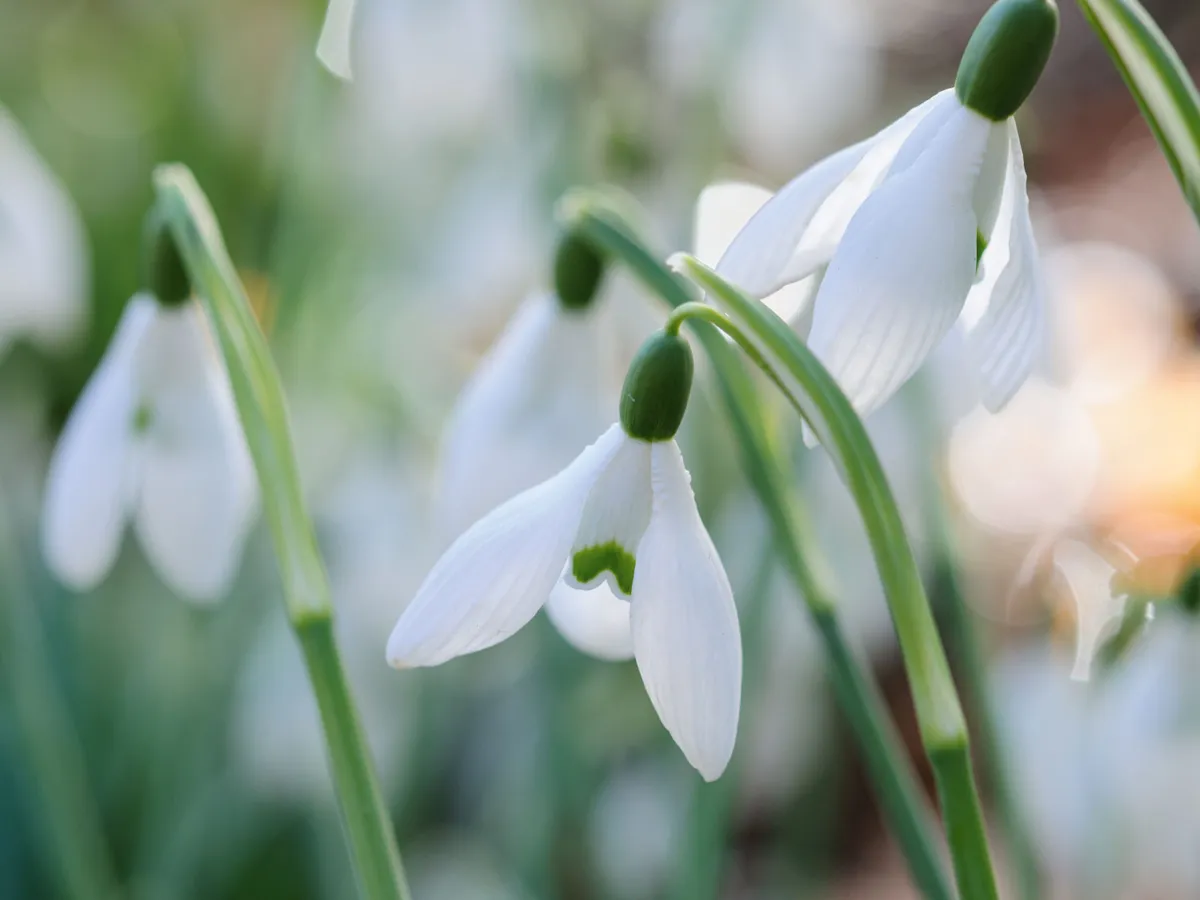
Once established, snowdrops need little care.
After flowering, allow the foliage to die back on its own.
Snowdrops grown in containers need to be repotted into fresh compost every year when dormant, in late spring or summer.
Plants in containers also must be watered to stay moist throughout the year.
Snowdrop problems
Growing snowdrops is usually problem free, but you may encounter the folllowing issues:
Failure to flower
Often snowdrops will fail or not come back after one season because they have dried out. Be sure to plant them in a spot in your garden that does not dry out in summer – under a deciduous tree is ideal.
Short blooming time
Snowdrops flower for longer in cool, overcast conditions, and will go over faster in bright, warm weather.
Narcissus bulb fly
The narcissus bulb fly affects narcissi, as its name suggests, but also other bulbs including snowdrops. Telltale signs include lack of leaves, and wispy or yellow and distorted leaves and a hollow, pulpy bulb. Dig up the infected bulbs and burn or bin them. Always buy bulbs from a reputable bulb supplier.
Squirrels
Squirrels may be attracted to dry bulbs planted in autumn. You could try covering the area with chicken wire, and planting them deeply, will make them less likely to be uncovered.
Find out how to stop squirrels eating your bulbs
Grey mould
In very wet and poorly drained soil, snowdrop bulbs can be affected by grey mould. In this case, they should be discarded to prevent it spreading.
